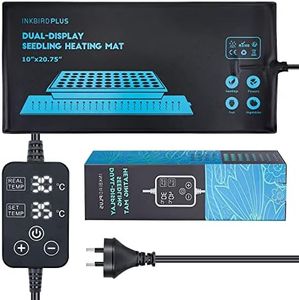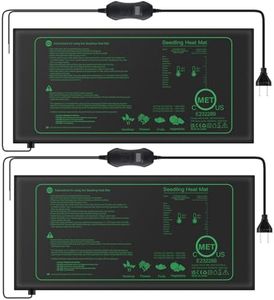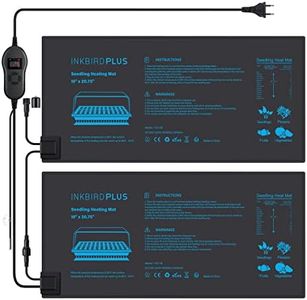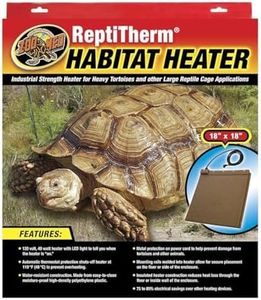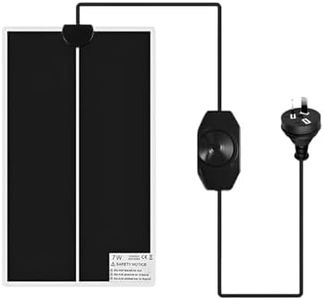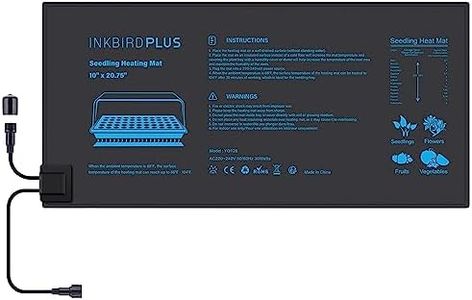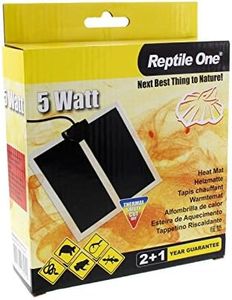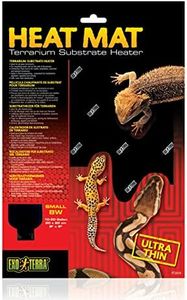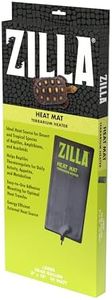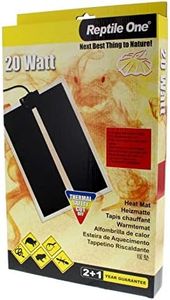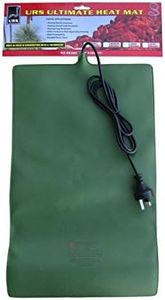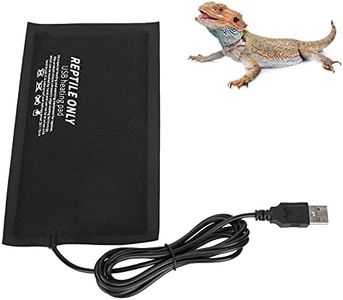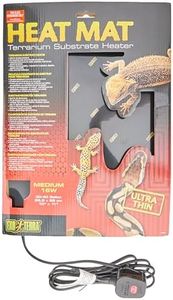We Use CookiesWe use cookies to enhance the security, performance,
functionality and for analytical and promotional activities. By continuing to browse this site you
are agreeing to our privacy policy
10 Best Reptiles Heat Mats
From leading brands and best sellers available on the web.Buying Guide for the Best Reptiles Heat Mats
Choosing the right heat mat for reptiles is essential for their health and comfort. Heat mats are commonly used to create a warm spot in a terrarium or vivarium, which is important because reptiles are cold-blooded and rely on external sources of heat to regulate their body temperature. When picking a heat mat, you need to consider your reptile’s species, activity level, and enclosure size to ensure the environment is safe and supportive for your pet.WattageWattage refers to how much power the heat mat uses and essentially determines how much heat it generates. Low-wattage mats (5-10W) are suitable for small enclosures and tiny reptiles or invertebrates, while higher wattages (15-25W or more) are necessary for larger tanks and heat-loving species. If you are caring for a species that requires a warm, tropical environment, opt for a higher wattage that will offer the heat coverage required. For species that need only gentle heat or have smaller tanks, lower wattages are safer and more efficient.
SizeThe size of the heat mat is important because it needs to fit the reptile’s enclosure and provide enough heating without overpowering the whole habitat. Smaller heat mats work for compact tanks, heating just a portion of the floor to create a ‘hot spot,’ while large mats are necessary for big enclosures or species that need more body contact heat. Always choose a mat that covers about a third to one half of the enclosure’s floor to allow your reptile to move between warmer and cooler areas—this helps them regulate their own body temperature.
Temperature ControlTemperature control is all about having the ability to set or regulate how warm the mat gets. Some heat mats come with built-in thermostats, while others require you to buy a separate thermostat. Having precise temperature control is very important, because too much heat can harm your pet, while too little heat isn’t beneficial. If your reptile needs very specific temperatures to stay healthy, make sure the mat offers either an adjustable controller or is compatible with an external thermostat.
Placement (Under vs. Side Mounted)Placement refers to where the heat mat is installed on the enclosure: underneath or on the side. Under-tank mats are the most common, giving reptiles warmth from below, which is natural for many species that use heat from sun-warmed ground. Side-mounted mats provide ambient warmth from the side, which is better for species that don’t bask on the ground. Consider your reptile’s natural habits and enclosure type; ground-dwelling species benefit from under-tank heat, while arboreal (tree-living) or burrowing species might enjoy side heat.
Waterproofing and Safety FeaturesWaterproofing and safety options protect both your reptile and your electrical system from risks like electrical shorts or fires. A well-sealed mat is important if the tank might get wet or if humidity levels are high, as in many tropical enclosures. Look for mats with solid mylar or PVC coatings and built-in safety shut-off features. If your setup involves frequent misting or you have a pet prone to tipping water dishes, prioritizing waterproof and safety-tested products is wise.
